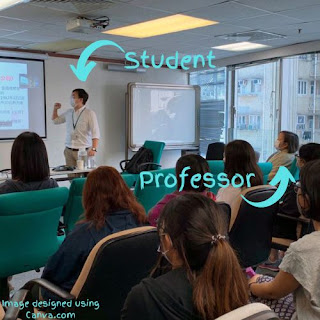My Thoughts about 'THINKING ABOUT TEACHING AND LEARNING' by Robert Leamnson
Before Spring Break, I gave a colleague of mine copies of Malcolm Knowles's The Making of an Adult Educator and Carl Rogers's Freedom to Learn. In return, he gave me a copy of Robert Leamnson's Thinking about Teaching and Learning, which I tried to read but eventually lost interest and gave up. Here are my thoughts, which I shared in an email with my colleague.
I enjoyed Leamnson's perspective. He is of the opinion that good teachers are themselves interested in being lifelong learners. He is also aware that learning is context dependent, and that it depends on a variety of factors (and not just mental skill). I think it is an excellent book if someone wishes to be a more thoughtful teacher.
My issue, I suppose, is that I'm not interested in teaching. I cannot follow him or anybody else down a pathway that stipulates that learning must be orchestrated by a teacher. In my opinion, this is like asking a learner to learn by first tying their hands behind their back and blindfolding them. I believe that holding this perspective handicaps learners and their learning. I think this is why I didn't much care for Peter Lang's books about Small Teaching.
More specifically, I didn't like:
- Leamnson's definition of thinking. I'll point to Max Wertheimer (Gestalt psychologist) and Martin Heidegger (existential philosopher) for useful definitions of thinking. Both scholars indicate that thinking is not using logic to solve a problem or following instructions. Thinking, for Wertheimer and Heidegger, is confrontation with novelty. Following principles of neuroplasticity to help learner's axons connect (which Leamnson advises) is like asking teachers to sacrifice thinking and to follow a recipe instead.
- Leamnson's use of neurobiology: The discussion about neuroplasticity is helpful for indicating that repetition is useful for learning. However, this occurs in all repeated acts, including self-defeating behaviors, habits, reflex actions, thoughtless actions, and so on. Conflating this with thinking is problematic. Calling this "learning" is also problematic. The brain and human nervous system do not think. If we had classrooms full of brains in vats, then we would feed them sugar and keep them 98.6 degrees. Human person's think. Thinking, following Heidegger's description, begins with abandoning what is known or established or taken for granted and, in this case, asking, "so what does it mean to learn, and what is my role in this?"
- I am also dissatisfied with Leamnson's opinion that first year students must first learn how to be college students. Aren't preservice teachers in college to become preservice teachers? Why can't they work on becoming teachers? If college requires its own training program, then it seems to me that college has been poorly designed.

Comments
Post a Comment